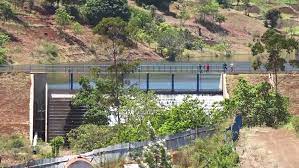Kenya’s national government has set out new plans for the implementation of Maragua-4 dam which is set to benefit Murang’a residents. The initial designs of the proposed Sh. 42 Billion Maragua-4 dam will be changed. This is to ensure Murang’a residents benefit from water from the reservoir, according to Water Cabinet Secretary Alice Wahome.
Construction of the mega dam, expected to commence before the closure of this year. Importantly, Maragua-4 dam new plans will benefit residents of Murang’a and those in Nairobi equally. Additionally, the dam will be a second reservoir in Murang’a to supply water to Nairobi and its environs. This is after the Ndakaini dam, which is in Gatanga constituency.
Also Read: Kenya Government Construct Mega Water Dam at Uganda Border
Once complete, the dam will supply water to Kahuro, Kiharu, Maragua, Kandara, Kigumo, and parts of Gatanga sub-counties. Importantly, the new design will have a capacity to supply of 180, 000 cubic meters of water on a daily basis. Additionally, water from the dam will be divided equally among residents in Nairobi and Murang’a counties.
Importance of Maragua-4 dam to Murang’a County water supply
Noteworthy, Wahome revealed additional new design plans are almost done. These plans will ensure that lower parts of Muranga, which experience minimal rains, will benefit from water from the dam.
Initially, Sh. 800 million Maragua-2 dam was constructed to supply parts of Murang’a south sub-county with water.
Meanwhile, the Water CS mentioned other interventions aimed at increasing water coverage in the county. Additionally, she revealed in the current financial years, funds have been allocated to rehabilitate some non-functioning boreholes.
“I had a discussion with local legislators about giving a list of boreholes in their areas that have water but are not functioning. The boreholes are set to be rehabilitated by cleaning and installing solar panels to provide power instead of using electricity, which is expensive,” she said, adding that drilling of new boreholes will be done after the rehabilitation of existing boreholes is done.

